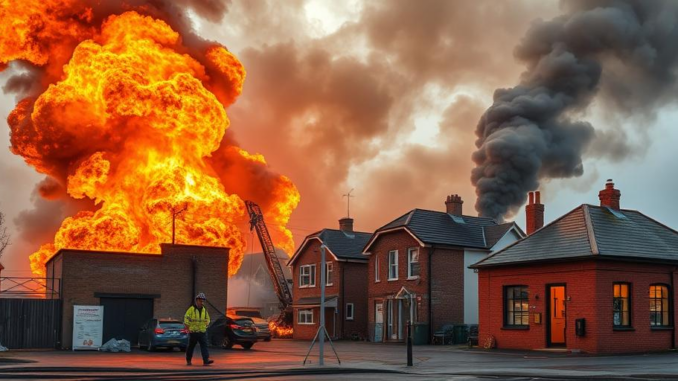
Summary
This article discusses the impact of Planning Gateway One (PGO) three years after its implementation. We explore how PGO has transformed fire safety considerations in high-rise building design, examining its processes and the positive outcomes observed. Finally, we look at the future of PGO and its ongoing role in creating safer buildings.
Successful low-energy building design hinges on careful planning. Focus360 Energy can help.
** Main Story**
Alright, let’s talk Planning Gateway One. It’s been three years since its introduction, and honestly, it’s hard to overstate the impact it’s had on fire safety in high-rise buildings. Seems like just yesterday that the UK construction scene changed forever with its arrival in August 2021. Part of the larger Building Safety Act 2022, PGO was a big move towards making fire safety a priority right from the get-go. And you know what? It’s actually working.
A Needed Step After Grenfell
Think back to the Grenfell Tower tragedy in 2017. I remember watching the news reports, absolutely horrified. It was a stark reminder, wasn’t it, of what happens when fire safety isn’t taken seriously? The Hackitt Review that followed really exposed some deep-seated problems within the industry. The Building Safety Act, and PGO as a key piece of it, was the government’s response, pushing for a more proactive approach. It was about getting fire safety baked into the initial planning stages, which, frankly, is where it should have been all along.
How It Works: HSE to the Rescue
So, how does PGO actually work? Well, it makes the Health and Safety Executive (HSE) the official go-to for planning applications involving those taller buildings – residential and educational buildings that are 18 meters or seven stories and up. Developers now have to submit a fire statement with their application. This statement needs to detail all the fire safety considerations they’ve included in their design. The HSE then reviews this, offering recommendations to the local planning authority. Basically, it ensures that fire safety is actually informing planning decisions and it is caught early.
And this early intervention? It’s been a game-changer. The HSE’s expertise allows them to spot potential fire risks early on. Developers can then address these risks before construction even starts. This means fewer costly fixes down the line, not to mention safer buildings overall. Plus, the whole process promotes collaboration between developers, local authorities, and the HSE. It’s about creating a shared responsibility for fire safety, which is essential.
Seeing Real Progress
Honestly, the numbers speak for themselves. The HSE’s involvement through PGO has really upped the game when it comes to fire safety design in high-rise buildings. Take a look at the stats: back in 2022, the HSE raised concerns in 57% of the cases they reviewed. Fast forward to 2023, and that number dropped to 35%. Then, in 2024, it fell again, hitting just 16%. See what I mean? That’s a clear downward trend, a sign that developers are starting to take fire safety seriously from the very beginning. It shows a real cultural shift towards proactive safety management. So, you might ask, is it really working?
PGO has definitely put fire safety higher on the agenda during the design phase for tall buildings. What’s more, this collaborative approach has boosted communication and transparency between all the players involved. The result? Safer, more resilient buildings and if you ask me, that’s something worth celebrating.
Looking ahead, PGO is set to keep playing a crucial role in fostering a culture of proactive fire safety within the industry. It’s helping to shape a future where people can genuinely feel confident about the safety of their homes. It’s not perfect, of course, there’s always room for improvement, but it’s a damn good start, wouldn’t you agree?


The decreasing concern rate from the HSE is encouraging. How might Planning Gateway One be adapted to address fire safety in existing high-rise buildings, especially those built before its implementation? What incentives could encourage retrofitting and safety upgrades in these structures?
Great point! Addressing existing high-rise buildings is definitely the next frontier. Exploring incentives, like tax breaks or grants for retrofitting, could be a powerful way to encourage crucial safety upgrades. Perhaps a phased implementation plan based on building risk assessment could also be considered. Let’s keep this conversation going!
Editor: FocusNews.Uk
Thank you to our Sponsor Focus 360 Energy